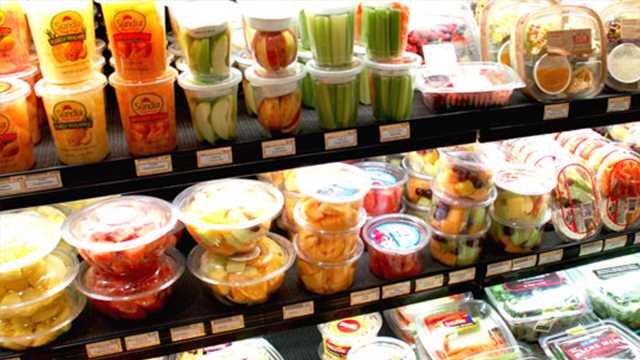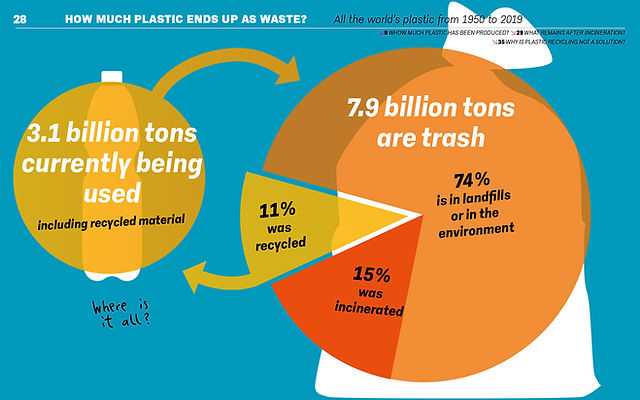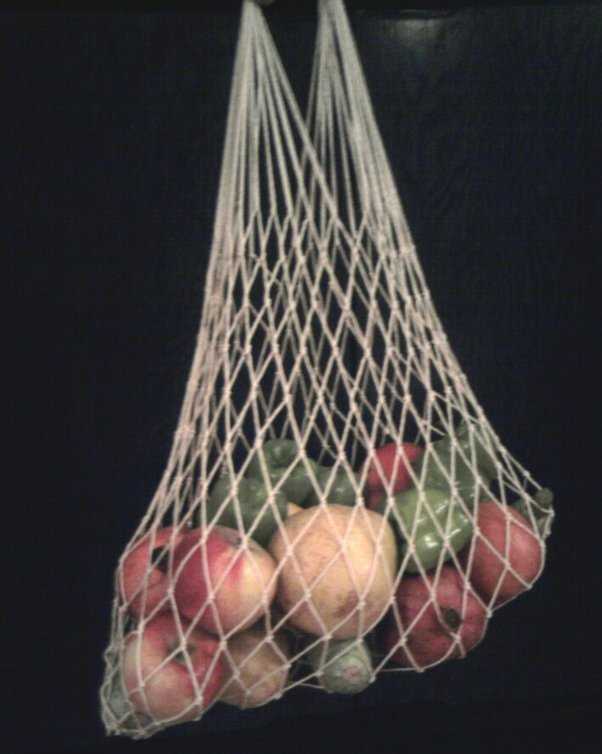
In today’s modern world, plastic is everywhere. It is an essential material used in almost every industry and can be found in products ranging from packaging materials to electronic devices. However, plastic is not a sustainable material and has adverse effects on the environment. It takes hundreds of years to decompose, leading to pollution of land and water bodies. But before the invention of plastic, humans used various alternative materials that were more eco-friendly and sustainable.
One such alternative material is glass. Glass has been used for centuries and has a long history dating back to ancient civilizations. It is made from natural materials like sand, soda ash, and limestone, making it an environmentally friendly choice. Glass is not only recyclable but also non-toxic, making it suitable for food and beverage containers. It is also impermeable, preserving the flavor and quality of the stored products. Glass was widely used before plastic became popular, especially in the manufacturing of bottles and jars.
Another popular alternative material to plastic is metal. Metals such as aluminum and steel have been used for centuries due to their durability and recyclability. Unlike plastic, metal can be recycled indefinitely without losing its quality. It also has a high melting point, making it suitable for cooking utensils and appliances. Metal containers were commonly used for storing food and beverages before plastic containers became mainstream. Additionally, metal was also used in the construction industry for roofing, pipes, and other structural elements.
Before the invention of plastic, natural fibers were extensively used as an alternative material. Fibers such as cotton, wool, and hemp were utilized for making clothing, bags, and other textile products. These fibers are renewable and biodegradable, making them environmentally friendly. They are also breathable, comfortable, and have excellent insulation properties. The use of natural fibers not only reduced the demand for plastic-based synthetic fibers but also supported the livelihood of farmers and artisans engaged in the production of these natural materials.
- Natural materials used for everyday objects
- Traditional materials used for packaging
- Historical uses of plant-based materials
- Animal-based materials and their applications
- Leather
- Wool
- Beeswax
- Shellac
- Innovative materials from the past
- Bamboo
- Animal bone
- Cultural significance of pre-plastic materials
- Question-answer:
- What are some alternative materials that were used before the invention of plastic?
- Why did people start using plastic instead of other materials?
- What were the environmental impacts of using alternative materials before plastic?
- Did people face any challenges with the use of alternative materials?
- Are there any efforts to reduce plastic use and promote alternative materials today?
- What materials were used before plastic was invented?
Natural materials used for everyday objects
Before the invention of plastic, people relied on a variety of natural materials for everyday objects. These materials were readily available in nature and often had unique properties that made them suitable for specific uses.
One commonly used material was wood. Wood was used to create furniture, utensils, and tools. Its durability and versatility made it an ideal choice for many applications. Additionally, wood could be easily carved and shaped to create intricate designs.
Another natural material that was widely used was clay. Clay was used for making pottery and ceramic objects. It could be molded into various shapes and then hardened by firing it in a kiln. Clay objects were known for their strength and heat resistance.
For containers and storage, people relied on natural fibers such as woven grasses, animal hides, and plant materials. These materials were used to make baskets, bags, and even clothing. They provided a lightweight and flexible alternative to heavier materials like metal.
In some cases, natural materials were combined to create more durable objects. For example, animal bones, sinew, and hide were used to create tools and weapons. The bones were shaped and sharpened, while the sinew and hide provided the necessary strength and flexibility.
Overall, people were resourceful in finding and utilizing natural materials for their everyday needs. These materials not only served practical purposes but also had a unique beauty and connection to the natural world.
| Material | Uses |
|---|---|
| Wood | Furniture, tools, utensils |
| Clay | Pottery, ceramic objects |
| Natural fibers | Baskets, bags, clothing |
| Animal bones, sinew, hide | Tools, weapons |
Traditional materials used for packaging
Before the widespread use of plastic, various traditional materials were used for packaging purposes. These materials were not only eco-friendly but also provided effective protection for the goods being packaged. Some of the most commonly used traditional packaging materials include:
1. Glass: Glass containers, such as bottles and jars, have been used for packaging for centuries. Glass is a durable and non-reactive material that helps preserve the quality and freshness of food and beverages. However, glass packaging is heavy, making it less cost-effective for transportation.
2. Paper: Paper packaging, made from the pulp of wood, has been used for centuries. It is lightweight, recyclable, and easily customizable. Paper bags, boxes, and cartons are commonly used for packaging dry goods, such as grains, flour, and tea.
3. Metal: Metal containers, such as tin cans, were widely used for packaging foods before the advent of plastic. Metal packaging provides excellent protection against moisture, light, and air, ensuring the longevity of perishable goods. However, metal packaging is less commonly used now due to its high production cost.
4. Cloth: Fabric bags and pouches made from materials like cotton and jute have long been used for packaging various goods. Cloth packaging is reusable, sturdy, and biodegradable, making it a sustainable alternative to plastic bags.
5. Natural Fibers: Natural fibers, like straw and hay, have been used for packaging agricultural products for centuries. These materials offer excellent breathability, allowing the produce to stay fresh for longer. Additionally, they are compostable and pose no environmental harm.
6. Wood: Wooden crates and boxes were commonly used for packaging heavy or fragile goods. Wood is a strong and durable material that provides great protection during transportation. However, wooden packaging is less commonly used now due to deforestation concerns and the availability of more cost-effective alternatives.
While plastic has become the dominant packaging material due to its low cost and versatility, these traditional materials still hold value in terms of sustainability and their ability to reduce plastic waste. Efforts should be made to explore and promote the use of these alternative materials for packaging purposes.
Historical uses of plant-based materials
Before the invention of plastic, people relied on various plant-based materials for a wide range of purposes. These materials were readily available and easily renewable, making them a popular choice for everyday items.
One commonly used plant-based material was bamboo. Bamboo is a fast-growing grass that can be harvested and used for a variety of purposes. In ancient times, bamboo was used to make baskets, mats, and even boats. Its flexibility and strength made it an ideal material for construction.
Another plant-based material that was widely used was cotton. The fibers of the cotton plant were woven into cloth and used to make clothing, bedding, and household items. Cotton was prized for its softness and breathability, making it a popular choice for textiles.
In addition to bamboo and cotton, other plant-based materials like wood, leather, and even animal bones were commonly used. These materials were used to make furniture, tools, and various implements.
The use of plant-based materials was not only practical but also had cultural significance. Many ancient cultures had traditional crafts and skills that involved working with plant-based materials. These skills were passed down through generations, creating a rich heritage of craftsmanship.
Today, there is a growing interest in returning to these plant-based materials as alternatives to plastic. With a focus on sustainability and reducing waste, people are exploring ways to incorporate these materials into modern products and design.
By looking back at the historical uses of plant-based materials, we can gain inspiration and learn from the ingenuity of our ancestors. These materials offer a natural and environmentally-friendly alternative to plastic, reminding us of the importance of using resources wisely.
Animal-based materials and their applications

Before the invention of plastic, people relied on various animal-based materials for a range of applications. These materials, sourced from animals such as cows, sheep, and even insects, were versatile and provided unique properties that made them valuable in everyday life.
Leather

One of the most well-known animal-based materials is leather, which has been used for thousands of years for its durability and flexibility. Leather was commonly used to create clothing, footwear, and accessories like belts and bags. It also found applications in upholstery and bookbinding.
Wool

Wool, derived from the fleece of sheep, was another important animal-based material. It was prized for its warmth, insulation, and moisture-wicking properties. Wool was used to make clothing, blankets, and carpets. Its natural flame resistance and ability to retain heat even when wet made it particularly valuable in harsh climates.
In addition to sheep’s wool, other animal fibers like cashmere and mohair were also used in the textile industry for their luxurious feel and excellent insulation.
Beeswax
Beeswax, produced by honeybees, was a versatile animal-based material used for its waterproofing and preservation properties. It was commonly used as a coating for fabrics and leather to make them water repellent. Beeswax was also used in candle making, as it burns slowly and emits a pleasant aroma.
Shellac
Shellac, a resin secretion produced by lac bugs, was used as a versatile and durable finish for wood and other surfaces. It provided a glossy and protective coating, making it ideal for furniture, musical instruments, and even food preservation.
These are just a few examples of the many animal-based materials that were commonly used before the invention of plastic. Although plastic has largely replaced these materials in many applications due to its convenience and lower cost, the use of animal-based materials still continues in certain industries that value their unique properties and sustainability.
Innovative materials from the past
Before the invention of plastic, people relied on a variety of innovative materials to meet their everyday needs. These materials, derived from natural sources, showcased the creativity and resourcefulness of our ancestors.
Bamboo
Bamboo has been used for centuries in various cultures around the world. Its versatility and strength made it an ideal material for construction, furniture, and everyday items. From bamboo scaffolding in ancient China to bamboo canes used as walking sticks, this plant provided sustainable alternatives to modern materials.
Animal bone
Animal bone, specifically ivory, was another material commonly used before plastic became readily available. Ivory, sourced from elephant tusks and other animal bones, was used for making intricate sculptures, decorations, and musical instruments. Although the extraction of ivory has now been recognized as unethical due to its impact on wildlife, it remains an important part of our historical material culture.
Xylography
Wood-based materials were also extensively used before plastic. Xylography, the art of woodblock printing, originated in ancient China and later spread to Japan and other parts of Asia. Artists would carve intricate designs onto wooden blocks, which were then used to print images on paper or fabric. This technique was a precursor to modern printing, showcasing the ingenuity of our predecessors.
Papyrus
In ancient Egypt, people used papyrus, a plant material, as an alternative to paper. The stems of the papyrus plant were sliced into thin strips and woven together to create a writing surface. Papyrus scrolls were widely used to record important texts and documents, giving us valuable insights into the history of civilizations.
In conclusion, our ancestors made use of a diverse range of materials to fulfill their needs before the advent of plastic. These innovative materials highlight their ingenuity and provide valuable inspiration as we search for sustainable alternatives in the modern world.
Cultural significance of pre-plastic materials

Before the invention of plastic, ancient civilizations relied on a variety of materials to meet their everyday needs. These materials had significant cultural importance and played a vital role in shaping the way people lived and interacted with their environment.
Clay: One of the earliest materials used by humans, clay had a profound cultural significance across different civilizations. It was used for making pottery, bricks, and figurines, which served functional and artistic purposes. Clay objects were often decorated with intricate designs that reflected the cultural values and beliefs of a particular society.
Wood: Another important material, wood was widely used for construction, toolmaking, and carving. Different types of wood were valued for their unique properties, such as strength, durability, and resistance to decay. The use of wood in architecture, furniture, and artistic pursuits reflected the cultural and aesthetic preferences of a community.
Stone: Stone was highly prized for its durability and versatility. It was used to build structures, create tools, and make decorative objects. Stone artifacts often had symbolic or religious significance, and their craftsmanship provided insights into the cultural and artistic achievements of ancient civilizations.
Fiber: Natural fibers, such as cotton, silk, and wool, played a crucial role in the textile industry before the advent of synthetic fibers. These materials were used to create clothing, tapestries, and other textiles that reflected the cultural identity of a society. The weaving and dyeing techniques associated with natural fibers were passed down through generations, contributing to the rich textile traditions of different cultures.
Metal: Metals like bronze and iron were vital for technological advancements and cultural development. They were used to create weapons, tools, and decorative objects, symbolizing power, wealth, and social status. Metalworking techniques were closely guarded secrets and often influenced trade and diplomacy between civilizations.
Glass: Although glass was not prevalent in pre-plastic times, its invention revolutionized the way people viewed and interacted with the world. Glass objects, such as vessels and mirrors, had cultural significance and were highly prized for their beauty and functionality. Glassblowing techniques became highly sophisticated, leading to the production of intricate and delicate glassware.
Overall, the cultural significance of pre-plastic materials cannot be overstated. These materials not only met essential needs but also shaped the artistic, technological, and societal development of ancient civilizations.
Question-answer:
What are some alternative materials that were used before the invention of plastic?
Before the invention of plastic, people used a variety of materials such as wood, metal, glass, and textiles. These materials were widely used for various purposes including packaging, construction, and household items.
Why did people start using plastic instead of other materials?
Plastic became popular due to its versatility, durability, and low cost of production. It provided an affordable alternative to traditional materials and could be easily molded into different shapes and sizes. Additionally, plastic was lightweight, waterproof, and resistant to chemicals, making it suitable for various applications.
What were the environmental impacts of using alternative materials before plastic?
While alternative materials like wood, metal, glass, and textiles were more biodegradable than plastic, they still had their own environmental impacts. For example, deforestation for wood and the energy-intensive production of metal resulted in habitat destruction and increased carbon emissions. Additionally, manufacturing glass and textiles consumed large amounts of water and chemicals. However, these materials were often reused or recycled, reducing their overall impact.
Did people face any challenges with the use of alternative materials?
Yes, people faced challenges with the use of alternative materials. Wood, metal, and glass were heavier and less flexible than plastic, making them less suitable for certain applications. Textiles, on the other hand, had limited durability and were more prone to wear and tear. Additionally, the use of alternative materials required more labor and resources compared to plastic, which affected production costs and availability.
Are there any efforts to reduce plastic use and promote alternative materials today?
Yes, there are numerous efforts to reduce plastic use and promote alternative materials today. Many governments, organizations, and individuals are advocating for the use of sustainable, biodegradable materials such as bamboo, paper, hemp, and plant-based plastics. Recycling programs, bans on single-use plastics, and consumer awareness campaigns are also being implemented to reduce plastic waste and encourage the adoption of eco-friendly alternatives.
What materials were used before plastic was invented?
Before the invention of plastic, various materials were used. These included natural fibers such as cotton, silk, and wool, as well as materials like glass, metal, and wood.